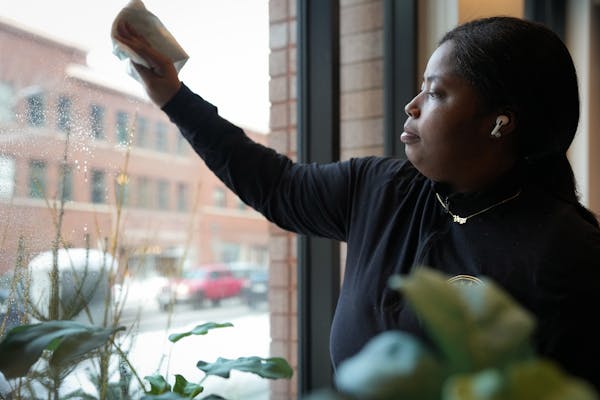Whether it's a day with the flu or months with a newborn, Minnesota workers would be able to take time off and still get paid under two proposals moving quickly at the State Capitol.
Democrats have spent years pushing for sick and safe time and paid family and medical leave. They contend the two measures will benefit hundreds of thousands of Minnesotans.
"We need both of these benefits," said Rep. Liz Olson, DFL-Duluth. "But they work and function very differently."
The ideas stalled in a previously divided Legislature, with Republicans and some business owners concerned about costs and "one size fits all" mandates. Under a Democratic-controlled Legislature and DFL governor, both are poised to pass.
But how do the two bills fit together? And what will they mean for Minnesota employees and businesses?
Sick and safe time
Employees would rely on sick time when they need to take a short period off work, whether that's a few hours to take a child to get a shot or a few days off when they are sick.
Workers would have to earn the time off at a rate of one hour for every 30 hours worked, with their sick and safe time accrual maxing out at 48 hours a year — unless their employer agrees to a higher limit.
Potential uses range from mental and physical illness to preventive care to caring for an expansive list of family members including any blood relation or someone "whose close association with the employee is the equivalent of a family relationship." The "safe" part of the bill refers to allowing time off when a worker or the person's family member experiences domestic abuse, sexual assault or stalking.
Temporary or part-time workers would qualify for the benefit as long as they work at least 80 hours a year for the employer.
Businesses that already offer sick and safe time can continue their existing policies, as long as they meet the minimum standards in the legislation. Employers could face a fine of up to $10,000 if they have "repeatedly or willfully" violated the rules.
Employers would have to cover the cost of the new sick time requirement and implement the change by January. Olson, who is sponsoring the House bill, said it would amount to less than 1% of businesses' total labor costs.
For Lukman Jaiteh, manager of Value Foods African Market in Brooklyn Park, that's a worthwhile expense. He applauded the sick time plan, and said he thinks about someone forcing his wife or family members to work while ill.
"I put myself in their shoes. If they are sick, they are sick," said Jaiteh, adding that if people are worried about losing pay and feel compelled to work while sick, then they could spread the illness in their workplace and cause more employees to need time off.
The House passed the sick and safe time bill Thursday evening, 69-54. It was the fourth time the chamber has approved some version of the legislation. The proposal is moving slower in the Senate, which previously was controlled by Republicans and has never passed the measure before.
The Senate Finance Committee is set to take up the bill next and the committee chair said he expects to hear it soon. If senators opt to tweak the bill, the final measure that lands on Gov. Tim Walz's desk could differ slightly from what House Democrats approved.
Republicans unsuccessfully attempted to make a number of changes to the House proposal, from excluding employers with 25 or fewer workers to adding a tax credit for employers to offset costs.
Employers still are recovering from the pandemic and struggling with inflation, said House Minority Leader Lisa Demuth, R-Cold Spring. An across-the-board mandate is bad policy and they should take a "do no harm" approach to businesses, she said.
Employers already offer numerous benefits, Laura Bordelon with the Minnesota Chamber of Commerce said in a statement after the House vote.
"Disregarding what employers are already offering, this bill imposes a new paid sick and safe time mandate on every employer in the state, regardless of size, adding to the patchwork of laws already in place," Bordelon stated. "And, it's a precursor to the $1 billion 24-week paid family and medical leave mandate that will be next."
Paid family and medical leave
This program would apply to those taking long-term leave, whether they need to care for a baby or sick family member or have a lengthy recovery from an illness or injury.
Neither the House or Senate has taken a final vote on that bill this year, although the DFL-led House has signed off on it in the past.
The paid family and medical leave measure requires employees and employers to pay into a state program similar to unemployment insurance. State surplus dollars would help start the program, then it would be funded by a 0.7% payroll tax legislators say would be covered by both employees and employers. Chamber of Commerce officials have questioned that, and said the bill's language indicates the full cost would fall on employers.
A worker could take up to 12 weeks of medical leave and up to 12 weeks of family leave in a year, raising business concerns that someone could qualify for 24 weeks off in one year. Advocates and lawmakers noted people rarely take both types of leave in the same year.
Like the sick time program, employers could continue offering their own paid leave plans if they meet state requirements and would face fines if they don't comply.
